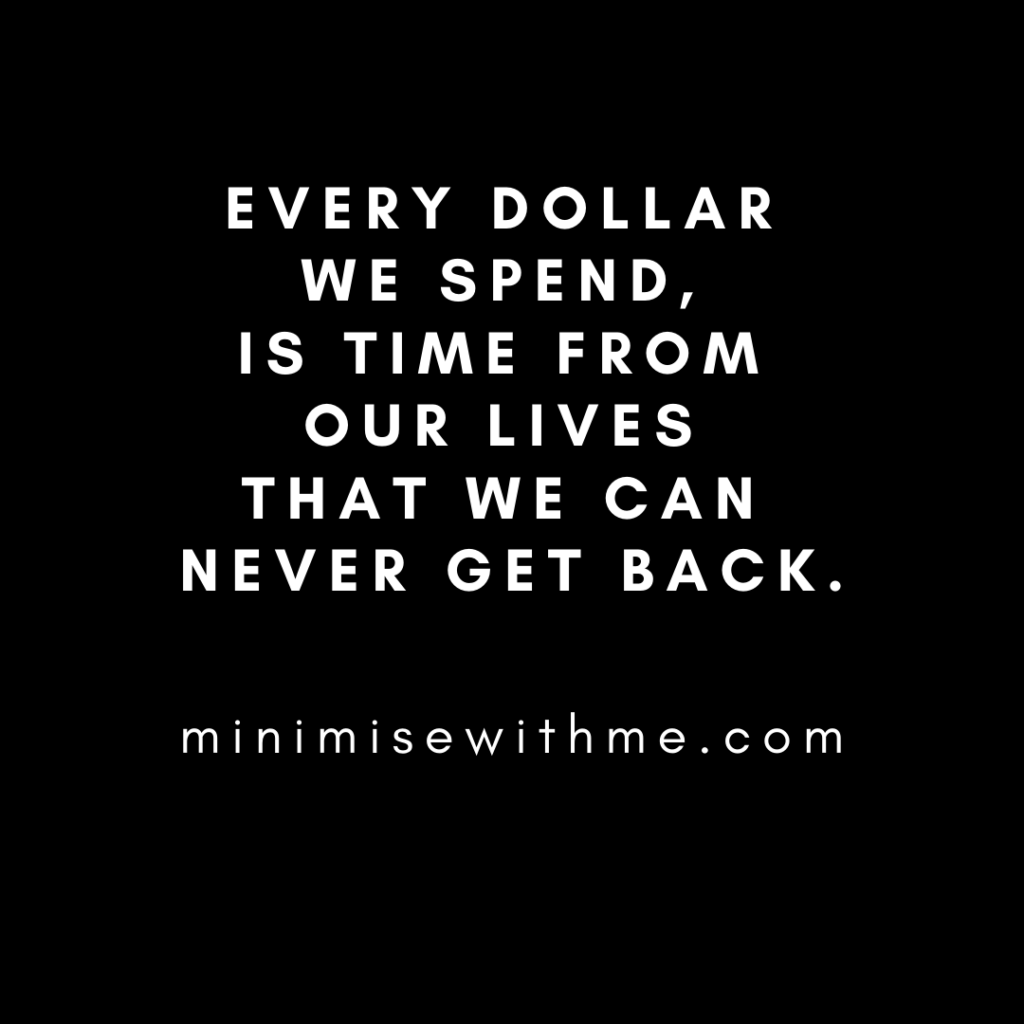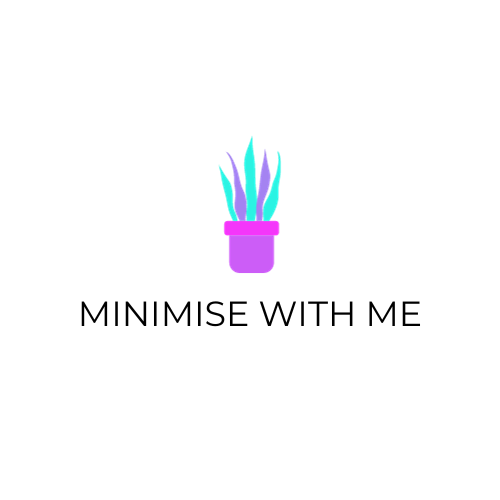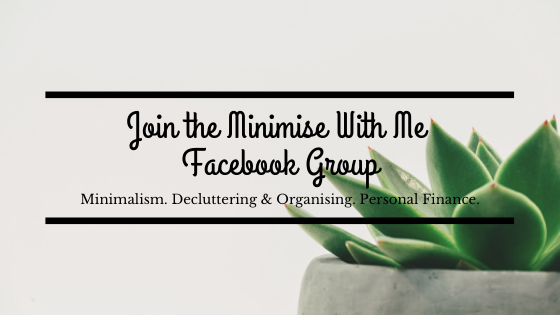If you are prone to buying on impulse and want some tricks up your sleeve to spend your money with intention, here are 8 Questions to Ask Yourself to Help You Stop Impulse Buying.
The next time you go to buy something, pause before you reach for your credit card, or opt for a Buy Now Pay Later payment and ask yourself these 8 questions.
The more of these you ask yourself, the less likely you will be to bring something home that you bought on impulse. No one enjoys that post-shopping spree regret. Here were get, let’s help you spend your money with more intention!
8 Questions to Ask Yourself to Help You Stop Impulse Buying
- Is This Item Going To Add Value To My Life?
If you are buying something that will not add value to your life why are you buying it? Sometimes we get so used to our shopping habits that we forget to stop and ask ourselves this.
If something is not going to add value to your life, you are truly just adding clutter to your home and wasting valuable resources: your time and money! You may justify buying something because it is so affordable, but there is more cost than the dollar amount exchanged.
The next time you face any of the following experiences or similar remember to ask ‘Is this item going to add value to my life?
You’re buying another book to add to your overflowing bookcase filled with books you still haven’t read…
You just added an outfit to your car that you only plan to wear once… (ignoring that you may already have something similar at home)…
You are stocking up on craft supplies when you haven’t even touched the collection of art supplies you already have at home….
If you aren’t planning to use that item in the immediate future, leave it on the shelf or delete it out of your cart.
2. Is It Something I Will Use Regularly?
When shopping, think about how much use you will get out of the item and use this to help determine firstly if you really need to buy it and secondly, the amount you are willing to pay for it (with the cost per use in mind).
When you buy something you can use regularly, you get more bang for your buck. It’s a good habit to focus on quality over quantity. Spend more on what you will use regularly.
For example, an expensive quality jacket might end up costing more upfront, but less per wear, than a cheaper one that is lower quality and falls apart in a matter of wears forcing you to rebuy another jacket sooner than you would have had to.
Your things should also ‘earn’ storage space in your home. If an item is used regularly, it deserves that valuable space on your kitchen counter or in your wardrobe more than something that is not used regularly.
With housing becoming more and more unaffordable, it is going to be more important than ever to ensure what you are bringing into your home deserves to take up your valuable space. So reserve your space for what you will use frequently and get the most value from.
If it is something you only need once off, perhaps you can borrow it from a family member for that one time and return it, saving yourself money and valuable storage space.
3. Will It Bring Me Joy?
Before making a purchase, ask yourself “Will this item bring me joy”? This will help you separate buying something that you want and that you will enjoy from something you are just buying out of habit, or boredom. It’s important to recognise that buying a want and buying on impulse are two different things. We can still purchase wants with intention!
Skip the purchases that won’t really bring you joy and save for the ones that do! Often we will say no to the things we really want (like a Summer holiday) but won’t hesitate to spend $10 here and there at Kmart on nothing in particular. That $10 may not sound like much in one shopping trip but trust me, it adds up!
For me personally, you won’t see me spend $1,000 on a handbag or a pair of shoes, but I will spend that (and more) on a mobile phone or laptop that I will use every single day and get 365 days of use out of the item! Work out what spending brings you joy, and what spending doesn’t, and spend accordingly!
4. Do I Have A Specific Use For It and A Place to Store It
Before making any purchasing decisions, have a think about what you will use the item for and where you are going to store it. This may seem like a weird thing to think about but it can help you avoid a lot of post-shopping guilt and anxiety.
I know a constant stress for me, back when I used to spend my money with less intention was buying a whole bunch of stuff and coming home and having to think about where the hell I was going to store it all. I know some days I just left the bags on the dining table or my drawers so I could deal with that issue later.
If your closet is busting at the seams and you don’t have room for another piece of clothing, or you have no shelving space for another stylish ornament, avoid the stress of finding somewhere to shove it in your home by asking before you walk out of the store with the item where you intend to store it.
Picture it in your head.
Will it go in your drawers or cupboard? Will it fit in your linen closet or on a particular shelf? Consider, does the idea of thinking where to put your new purchase when you get home frazzle you? If that is the case it might be time to declutter your home before you think about bringing anything more into your space and just leave that item in the store.
5. Is Having This Thing More Important To Me Than *insert goal here*
Sometimes you might have the best intentions when it comes to your money. You set yourself a goal but end up spending money you don’t have which takes away from your goal. Perhaps you don’t even have set goals for your money, which can lead you to impulse buying and spending more money than you would have, had you had those goals front of mind and a plan for your money.
By setting yourself regular goals, you’ll have more direction with how you spend your money and can then frame your purchasing decisions with questions like;
- Do I want this dress more than I want to go on my holiday to _______
- Do I want a new car more than I want to save up for my first home?
- Is this new book more important to me than putting that amount on my car loan to pay down my debt?
When you have a clear goal, you are more aware of what your spending is making you miss out on and you can use that goal to motivate you to spend more intentionally.
6. Am I Willing To Put The Time In To Maintain This Item?
Whenever we buy things, they come with a certain amount of maintenance which might not be so obvious at first. That is until it is in your home.
This maintenance might include washing and ironing an item of clothing, dusting around an item of decor, and so on.
Buying a car comes with the requirement to service it every 15,000kms, buying a new ornament requires picking that item up to dust or vacuum around it once a week.
These considerations convinced me to stay in my humble-sized home, rather than upsizing and taking on extra maintenance every single day.
These small chores add up over time and need to be considered when making a purchase.
Before impulse buying, ask yourself if you are willing to pick that item to dust around every weekend when you are doing your chores.
Ask yourself if you are willing to wash all those clothes you plan to buy and deal with the never-ending pile of laundry that comes with a large closet.
When you think about the commitment your stuff requires, it eventually looks a little less desirable and helps us to stop impulse buying.
7. If It Was Full Price Would I Still Buy It?
Sometimes a sale can completely blind us to all the things we should take into consideration before making a purchase. By pausing and asking ourselves ‘Would I buy this if it was full price?’, we can identify if an item really does meet our wants and or needs, or if it was just us impulsively acting because it was on sale.
When you change that price tag in your mind back to full price, suddenly you are asking yourself:
‘Do I love this enough to pay the full price’?
It’s a quick tool to have up your sleeve to put the brakes on grabbing for your credit or debit card, before you’ve really assessed how much you really want or need that item.
Sometimes after asking this question your answer would still be yes, and that’s when you know you can go ahead and make that purchase intentionally. If the answer is No, try and dig into whether that’s just a love of sales that’s got your saying no, or whether maybe you don’t really like the item as much as you thought you did when it had a for sale tag on it.

8. Is This Thing Worth My Time?
Most of us trade our time for money. I would suggest very few of us have an endless amount of money to pay for the things we want or need.
Every dollar we spend is therefore actually time from our lives that we can never get back.
When we buy things we need to consider how much of our lives we are willing to give up, or trade essentially, for that thing we want. When we think long and hard about our purchases in this light, it might help us to rethink how we spend our money and time and help us to stop impulse buying.
I was faced with this same scenario in my mid-20s when I worked two jobs. There came a point when I decided that losing my Sunday night, my time to relax and refresh before my work week started, wasn’t worth it in exchange for what I was paid and what I could buy with that money. I ended up quitting that second job after 5 years of working in both jobs simultaneously and never looked back. Nothing was worth more to me than having my Sunday night and my free time back.
Of course, there will be things that are worth spending on and exchanging our time for money, like food for our family, lights, water, and the clothes on our backs. There will be other things we find value in, like a decent computer or phone and the occasional book or movie to enjoy.
But when we buy things that we don’t need like our 50th pair of shoes, or a new phone when our old one is only a year old and works perfectly fine, we are throwing away hours of our lives that we can never get back on things that we don’t really need. I hope this question helps you to spend your money with intention and think of your purchases not just in terms of the cost, but the cost to your time, a resource that you can never get back.
Summary List
- Is This Item Going To Add Value To My Life?
2. Is It Something I Will Use Regularly?
3. Will It Bring Me Joy?
4. Do I Have A Specific Use For It and A Place to Store It
5. Is Having This Thing More Important To Me Than *insert goal here*
6. Am I Willing To Put The Time In To Maintain This Item?
7. 8. If It Was Full Price Would I Still Buy it
8. Is This Thing Worth My Time?
This week’s comment questions: What do you find is the most helpful question to stop impulse buying? Let me know in the comments 🙂



